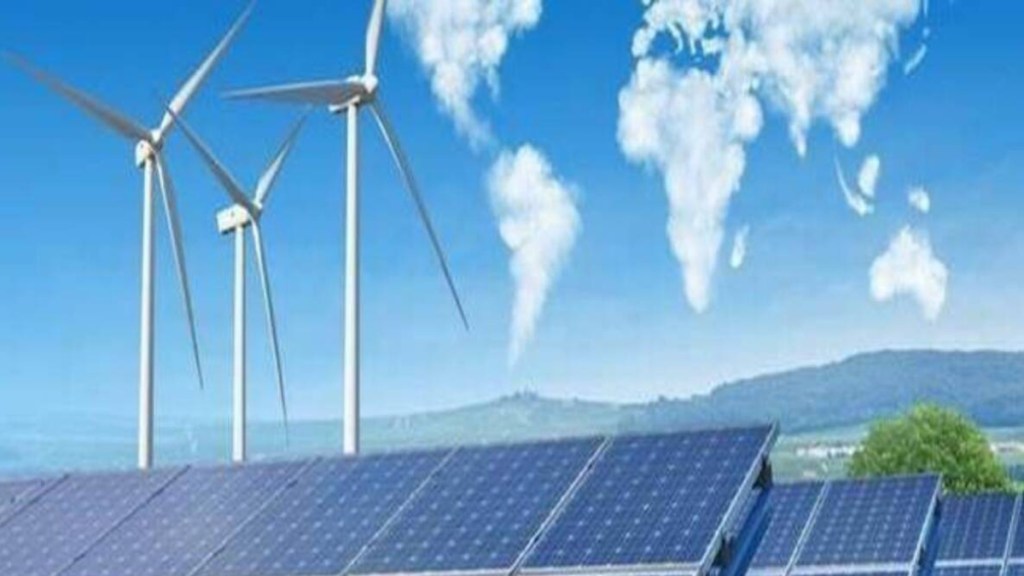By Somit Dasgupta & Diya Dasgupta
Recently, the International Energy Agency (IEA) published a report giving projections about renewable electricity generation for 2022-2027.
According to this report, electricity generation from renewable sources will witness phenomenal growth during this period, and the credit goes to the Ukraine crisis. The increase in the price of fossil fuels has made solar and wind generation more competitive and has provided the added impetus. Besides, countries in the West have also gone into overdrive and are in the process of strengthening their renewable energy policies.
In the US, the Inflation Reduction Act (2022) provides long-term policy visibility for wind and solar PV projects. This legislation extends tax credits for renewable projects till 2032.
In the European Union (EU), the ‘Fit by 55’ package aims to bring down greenhouse gas emissions by 55% by 2030, compared to the 1990 level. The EU, incidentally, is planning to increase the share of renewable generation in final energy consumption to 45% by 2030, exceeding the previous target of 40%.
The IEA report says that Germany has augmented its renewable energy targets, introduced higher auction volumes, and improved remuneration for distributed photovoltaics. Similarly, Spain has streamlined its procedures for permitting solar PV and wind plants and increased grid capacity for renewable energy projects. As a result of all this, the IEA has projected that the renewable sector will grow much faster than what was anticipated a year ago. Between 2022 and 2027, renewable capacity is expected to grow by 2,400 GW, which represents an 85% acceleration from the previous five years. Renewables will account for 90% of the global electricity capacity expansion, and the thrust will come from China, the EU, the US, and India. In fact, China alone will account for about 50% of the incremental capacity. In terms of global generation capacity, renewables will emerge as the largest source by 2025, surpassing coal. They will be responsible for 38% of energy generation by 2027, with solar and wind making up 20%. The corresponding shares of coal, natural gas, nuclear energy, and oil will go down.
Regarding India, the IEA report has painted quite a rosy picture for growth in renewable capacity during 2022-2027, fuelled primarily by the 500-GW non-fossil capacity target (by 2030) and the desire to achieve its ‘net-zero by 2070’ target. The IEA, it seems, has not taken cognisance of the fact that India, in its updated NDC (August 2022), has dropped the target of having 500 GW of non-fossil fuel generation capacity. The report says that India will add 145 GW of renewable capacity during 2022-27.
India, incidentally, has added only about 66 GW (including large hydro) in the last seven years or so. So, the additional 145 GW in the next five years is a tall order, and even if achieved, the total installed capacity of renewable generation (including large hydro) in 2027 will only be about 310 GW—making ‘500 GW by 2030’ difficult to achieve (though it no more is the stated target).
The optimism expressed by the IEA over India achieving its target is somewhat misplaced due to many factors. Since 75% of the incremental capacity is to come from solar, we may limit our analysis to this sector only.
While analysing the solar sector, it is important to separately view the two sub-components of utility-scale solar installations and solar rooftops. If we see our actual achievements vis-à-vis our previous target of 175 GW (by 2022), it is evident that the major shortfall is in the rooftop sector. The country has managed to install only 8 GW of rooftop capacity against a target of 40 GW (December 2022). The major factors adversely affecting the utility-scale solar projects are the increase in module prices, imposition of basic custom duties (BCD) of 40% effective from April 2022, restricting the purchase of solar modules to only the approved list of models and manufacturers (ALMM), which are considered to be inferior, non-payment of dues by distribution companies, the poor financial health of distribution companies, etc. The insistence on buying equipment from the ALMM list has also contributed to a spike in the prices of solar modules due to a mismatch in demand and supply. There is some talk of doing away with the direction of purchasing only from the ALMM for a period of two years, which may give some respite.
Further, there is an apprehension that there is going to be a big dip in solar installations beyond 2022, because all the imported modules that were purchased before the BCD was made effective will be used up. After a couple of years, the lack of storage will also become a major impediment to adding more renewable capacity. With regards to solar rooftops, there are additional problems such as the states insisting on gross rather than net metering, lack of easy finance, long payback periods, reluctance towards giving up rooftop space, insistence on collaterals for small consumers, poor after-sales service, etc.
The upshot is that the IEA has been unduly kind to India while assessing what we are likely to achieve by 2027. While the authors of the IEA report have only described the issues affecting the solar sector, there are several challenges confronting the wind and hydro sectors as well.
When it comes to the renewable sector, the next five years are going to be a lot tougher than the past five years. We need to take this report of the IEA with a pinch of salt and concentrate on how to effectively remove the impediments confronting the renewable sector.
(Respectively, senior visiting fellow, and research associate, ICRIER. Views are personal)
